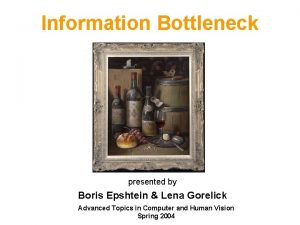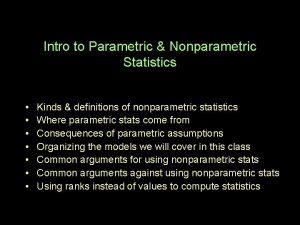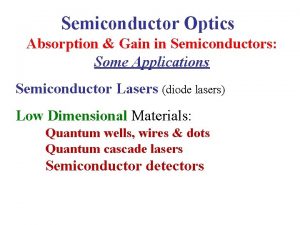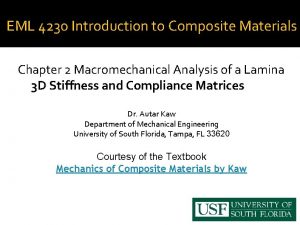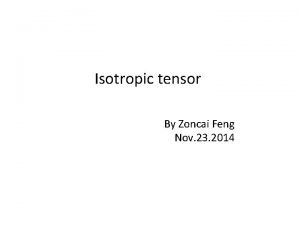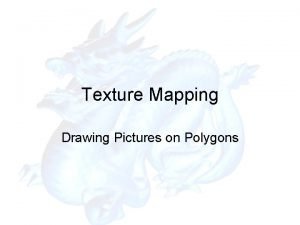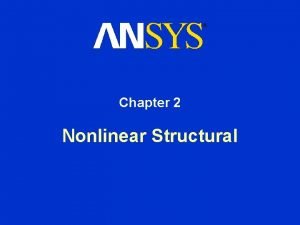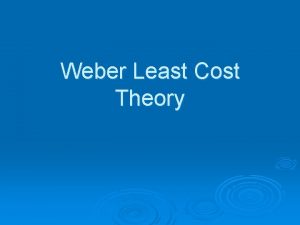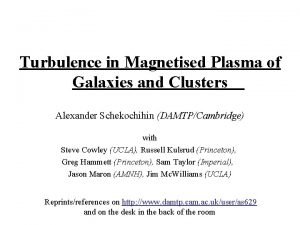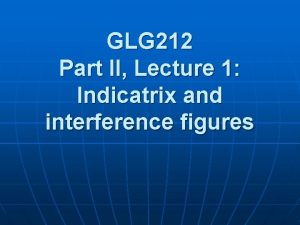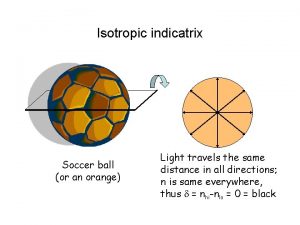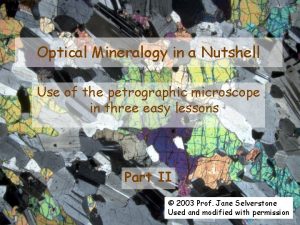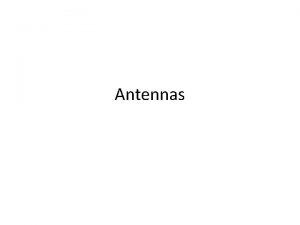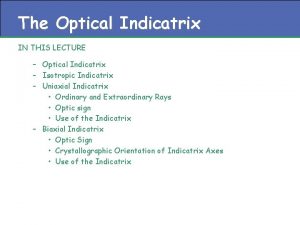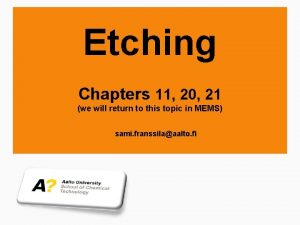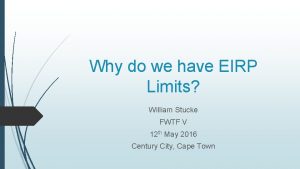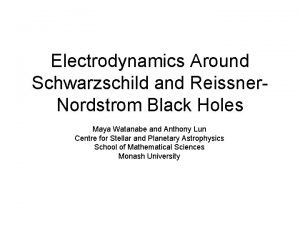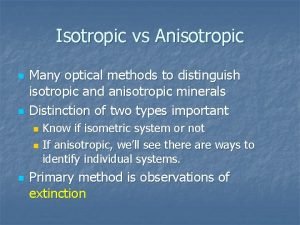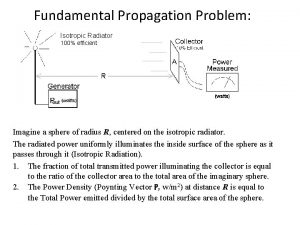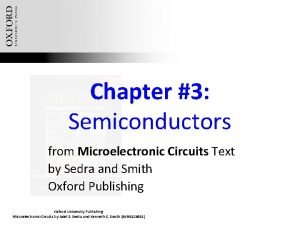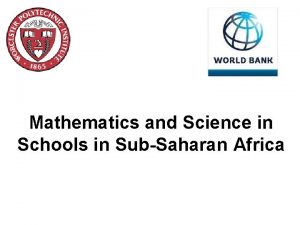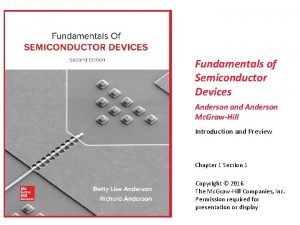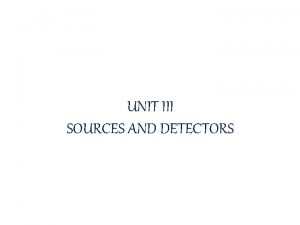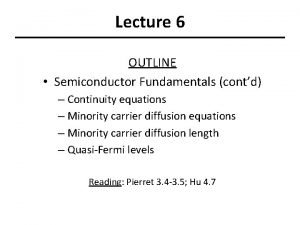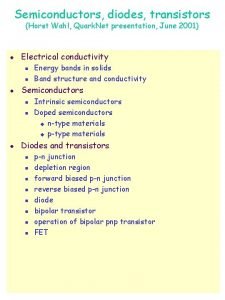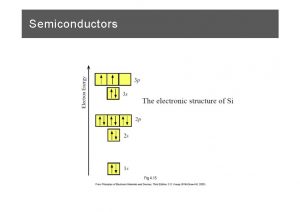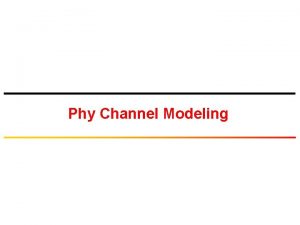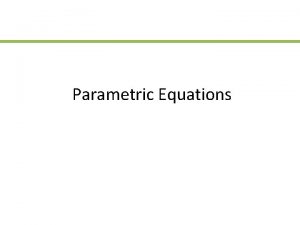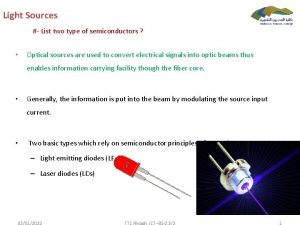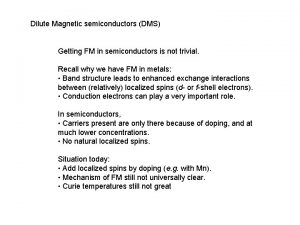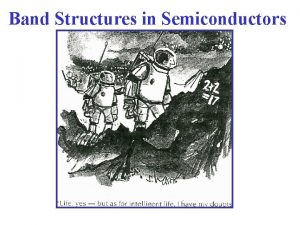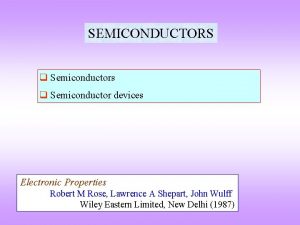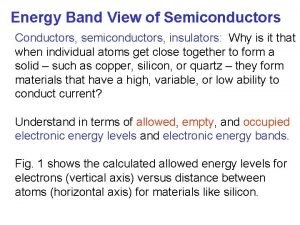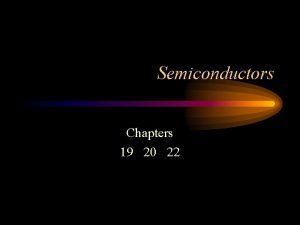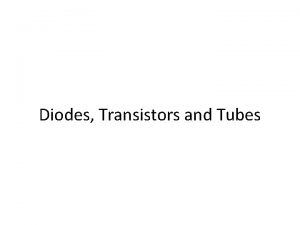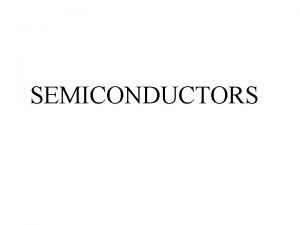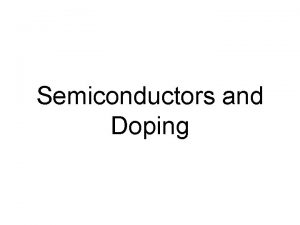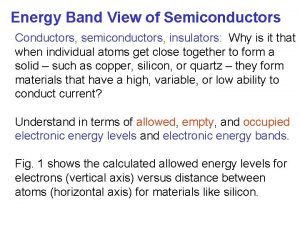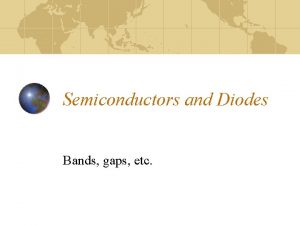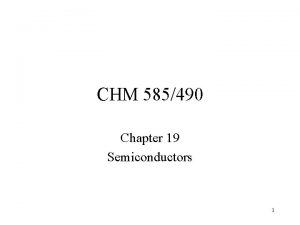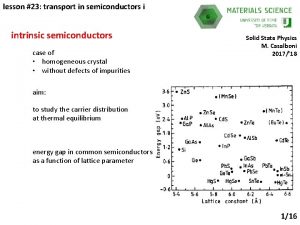INNOVATIVE OPTICAL PARAMETRIC SOURCES USING ISOTROPIC SEMICONDUCTORS E
































- Slides: 32

INNOVATIVE OPTICAL PARAMETRIC SOURCES USING ISOTROPIC SEMICONDUCTORS E. Rosencher, M. Baudrier, R. Haidar , A. Godard, M. Lefebvre and Ph. Kupecek* ONERA * University PMC

SUMMARY • Why bother? • Semiconductor c(2) properties • Quasi-phase matching • Total internal reflection phase matching • Random phase matching • Self-difference frequency generation • Conclusions

• Why bother? • Semiconductor c(2) properties • Quasi-phase matching • Total internal reflection phase matching • Random phase matching • Self-difference frequency generation • Conclusions

Laser Diodes vs OPO 10 Tunability single Pulsed OPO CRYOGENY Single diode

Atmospheric transmission (dry weather, sea level, 5 km)

• Why bother? • Semiconductor c(2) properties • Quasi-phase matching • Total internal reflection phase matching • Random phase matching • Self-difference frequency generation • Conclusions

SEMICONDUCTORS • 0. 45 µm < lcutoff < 20 µm (0. 05 e. V < Egap < 3 e. V) • High nonlinear performance (quantum theory of solids) : Second Fermi Golden Rule • Large transparency region Transmission. Harmonic including Fresnel losses (%) oscillator 70 • Low cost Zn. Se 60 50 40 • Mature technology III-V Ga. As 30 20 10 4 6 8 10 12 14 l (µm) • Isotropic materials NO possible phase matching scenario Li. Nb. O 3 16 18 20 22

Propriétés optiques non linéaires des matériaux

First order quasi-phase matching +d -d I DFG D k. L LCohérence

Quasi-phase matching techniques 10 kg/cm 2 5000 V Nb. Li. O 3 Ferroelectric polling M. Fejer et al (Standord) Molecular bonding (Ga. As, Zn. Se) TRT, ONERA, Stanford Ge Ga. As Zn. Se …. . Localized growth E. Lallier et al; M. Fejer et al Fresnel birefrigence R. Haidar et al (ONERA)

Periodical materials breakthrough 2 cm f = 10 k. Hz 20 ns 40 µm 98% PPLN POGa. As

Precise coherence length (LC) determination experimental set-up wavelength control • Pulse Energy : 1 m. J , 15 ns • Ds = 2 cm-1 1. 06 µm Li. Nb. O 3 OPO Iw 1 1 – Fx cos (Dk. L) w 3 & w 2 motorized translation Wedge a (a few deg. ) w 1 Filters Hg. Cd. Te detector thickness

Advantage of large gap semiconductors in the IR: Large coherence length Li Adashi R. Haïdar, A. Mustelier, Ph. Kupecek, E. Rosencher, R. Triboulet, Ph. Lemasson and G. Mennerat, JAP 2002

• Why bother? • Semiconductor c(2) properties • Quasi-phase matching • Total internal reflection phase matching • Random phase matching • Self-difference frequency generation • Conclusions

Quasi Phase Matching by Total Internal Reflexion * (Fresnel Birefringence) w 2 (p) • w 3 (s) dup + FF ddown L t q w 1(p) dftot = Dk. L + FF + 0 if dup. ddown > 0 p if dup. ddown < 0 FF = f 3, s - f 2, p - f 1, p *Armstrong et al. , Phys. Rev. 127, 1918 -1939 (1962)

w 2 Fresnel QPM w 3 L w 1 I z L = (2 n+1) Lc Dispersion phase matching Optimum thickness I z dftot = 0 [2 p] Fresnel phase matching Angle tuning

Fresnel QPM resonant QPM non resonant QPM Haïdar et al. , APL

Optimum angle for Fresnel birefringence phase matching Resonant Fresnel angle allowing (1. 9 µm, 2. 3 µm) 8 µm Haïdar et al. , JOSA B

Fresnel phase matching Configuration : experimental set-up wavelength control • Pulse Energy : 1 m. J , 15 ns • Ds = 2 cm-1 1. 06 µm Li. Nb. O 3 OPO w 3 & w 2 10 mm Zn. Se plate w 1 Zn. Se Filters Hg. Cd. Te detector R. Haïdar, A. Mustelier, Ph. Kupecek, E. Rosencher, R. Triboulet, Ph. Lemasson, APL 2002

Fresnel quasi-phase matching: Ga. As Pump w 3 : 150 µJ MIR Source : . 1 µJ between 9 µm and 13 µm Photonic yield :

Limitations of Fresnel QPM: influence of wafer roughness Zn. Se Ga. As 11 4 27 45 25 45 98 98. 99. 6 4 6

Limitation to Fresnel QPM: Goos-Hänchen shift Dx Nmax 200 Equivalent to walk off

• Why bother? • Semiconductor c(2) properties • Quasi-phase matching • Total internal reflection phase matching • Random phase matching • Self-difference frequency generation • Conclusions

Few lines of trivial theory Non depletion approximation 3 processes independant with Very predictive: - conversion yield proportional to sample length - independant on polarisation - resonant for - N/Neff easily measurable and compared with materials

RANDOM PHASE MATCHING (c) (a) Quasi-phase matching Phase mismatch Baudrier, Haidar, Kupecek, Rosencher (Nature, 2004. ) polycristalline Non linear diffusion in powder liquid and gas (b) (d) 110 axis Résonance pour taille de grain = longueur de cohérence

• Why bother? • Semiconductor c(2) properties • Quasi-phase matching • Total internal reflection phase matching • Random phase matching • Self-difference frequency generation • Conclusions

Cr 2+-doped Zn. Se CB 0. 510 µm Cr 2 + T Wi. Fi collapse ! 2. 1 2. 3 µm S VB 1. 9 µm High optical cross-section High solubility Large bandwith Good ONL materials Pompe: 1. 9 µm Good lasing Laser: 2. 3 µm Self DFG-OPO: 10 µm materials Zn. Se: Cr X OPO

Self-DFG Cr: Zn. Se laser—set-up Rmax @ 1. 9 µm R = 95% @ 2. 4 µm Tmax @ 9 µm Nd: YAG 1. 06 µm 10 ns 30 Hz 2. 4 µm laser 9 µm DFG 1. 9 µm pump OPO Cr: Zn. Se single-crystal (uncoated) Tmax @ 1. 9 µm R = 95% @ 2. 4 µm 50% single-pass absorption of the 1. 9 -µm pump energy 45° internal phase-matching angle (spp), 13 internal reflections Simple design: easy alignments, but high losses

Self-DFG Cr: Zn. Se laser – first results Laser (2. 4 µm) 9 -µm DFG preliminary results 5% yield (/absorbed energy) Note: thresholdless emission ! Small coupler transmission to maximize the 2. 4 -µm intracavity electric field First demonstration of self-DFG in Cr: Zn. Se laser

Self-DFG Cr: Zn. Se laser – discussions Small temporal overlap of pump and laser pulses Limited DFG efficiency Solution: longer pulse pump source Emitted DFG spectrum Broad line (no intracavity spectral filter) Fixed central wavelength Possible tuning schemes: pump or laser tuning + crystal rotation

• Why bother? • Semiconductor c(2) properties • Quasi-phase matching • Total internal reflection phase matching • Random phase matching • Self-difference frequency generation • Conclusions

Conclusions • Isotropic semiconductors are becoming viable solutions for non linear optical sources in the mid-infrared • Fresnel phase matching allows very large tunability from the mid-IR to the terahertz • Surface roughness principal limitations to Fresnel QPM • Random phase matching works in poly Zn. Se and allows very large samples • Cr 2+ doped Zn. Se allows thresholdless self DFG generation which greatly simplify source architectures: first realisation presented! Next step: electrical pumping of OPO !
 Parametric and non parametric algorithms
Parametric and non parametric algorithms Parametric vs non parametric test
Parametric vs non parametric test Univariate analysis tests
Univariate analysis tests Wilcoxon test effect size
Wilcoxon test effect size Optical loss and gain in semiconductors
Optical loss and gain in semiconductors Water resources importance
Water resources importance Print sources and web sources
Print sources and web sources Holds data, instructions, and information for future use
Holds data, instructions, and information for future use Effective isotropic radiated power
Effective isotropic radiated power Undercut etching
Undercut etching Stiffness matrix
Stiffness matrix Isotropic tensor example
Isotropic tensor example Polygon texture
Polygon texture Ansys bilinear isotropic hardening
Ansys bilinear isotropic hardening Weber's least cost theory model
Weber's least cost theory model Isotropic
Isotropic Biaxial indicatrix
Biaxial indicatrix Isotropic indicatrix
Isotropic indicatrix Uniaxial indicatrix
Uniaxial indicatrix What is a balun
What is a balun Isotropic indicatrix
Isotropic indicatrix Aridic
Aridic Oxide etcher
Oxide etcher Effective isotropic radiated power
Effective isotropic radiated power Reissner nordstrom metric
Reissner nordstrom metric Anisotropic vs isotropic
Anisotropic vs isotropic Isotropic
Isotropic Semiconductors
Semiconductors Semi conductor
Semi conductor Fundamentals of semiconductor devices anderson pdf
Fundamentals of semiconductor devices anderson pdf Direct and indirect band gap semiconductors
Direct and indirect band gap semiconductors Continuity equation in semiconductor
Continuity equation in semiconductor Semiconductors
Semiconductors
